‘This is my craft, this is my love, this is my meaning of life’
In Florence, Georgina Mills trained in the exacting techniques of neo-classical figurative sculpture. Now, in Re-framing, she’s striving to revitalise figurative sculpture’s relationship to the contemporary art scene in Australia.

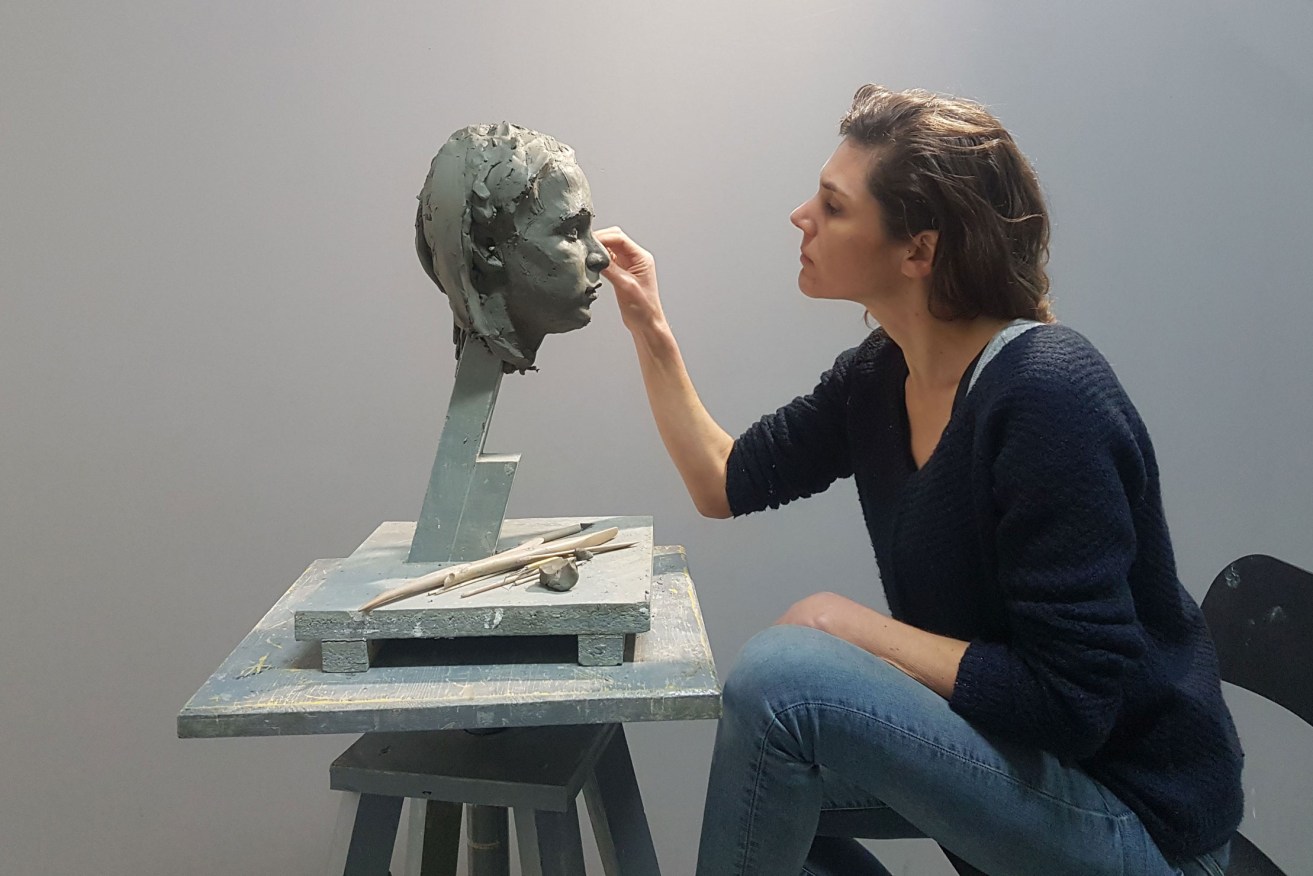
Giorgina Mills sculpting 'Dasha' in 2019, during her fourth year of a residency at the Florence Academy of Art in Italy. Photo: Supplied
Fellow sculptor and friend Jann Makepeace describes Georgina Mills as a “bended tree recovering from a strong wind”.
Makepeace – whose words were read at the launch of Mills’ solo SALA exhibition Reframing, at the David Roche Foundation House Museum – praises the sculptor’s resilience: since her forced return from Florence in the wake of COVID, she has found a studio, she’s teaching and she’s producing new work.
In conversations over coffee at her studio, Mills and I talk about her passion for figurative sculpture, about sculptural techniques – and grief.
Reframing sums up her journey since the pandemic forced her to come back to Adelaide from what Makepeace calls “living the dream” in Florence.
Mills has already paid a life price to learn how to express her deepest ideas in clay. In 2012, when she was 31, her partner Jamie died of leukaemia. He had had the blood disease for some time, but both of them thought their joint gamble with death would last a lot longer than it did.
She had trained at the North Adelaide School of the Arts, and had a degree from the Adelaide College of the Arts and a graduate diploma in arts and event management from UniSA, and she was trying to pursue her artistic ideas, but what she wanted to make now was beyond her skills.
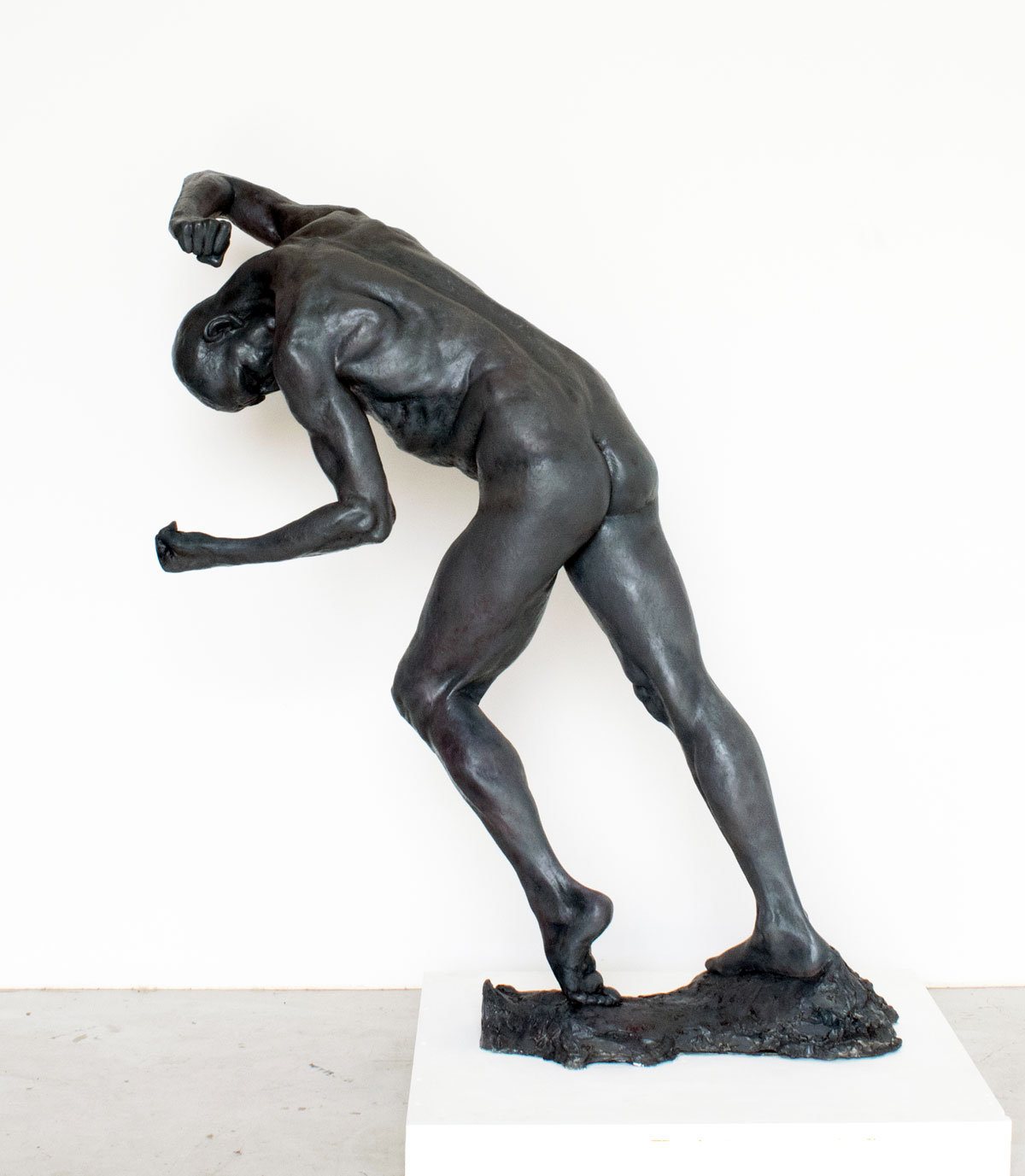
Anger, Georgina Mills, 2020.
Grief-stricken and trying to rebuild her life, Mills faced the decision of her lifetime. Would she spend their money on a house, and settle down to an “ordinary” life, perhaps with sculpture on the side? Or would she instead invest that money in perfecting her craft?
“I needed someone to show me what I was doing wrong or how I could do it better.”
Unable to find anything suitable in Australia, she started looking overseas and came across the Florence Academy of Art.
“I looked at their teachers’ work. Amazing! And I looked at the students’ work and, like, I’ve got to go there. If I can make it financially work, I’ve got to go,” she says.
She let friends and family think it was only for one year, but she knew it would take three, at least.
It took five years: she finished the three-year undergraduate course, became an artist resident and then a teaching assistant in the anatomy department at the academy.
She describes the academy program as “demanding, stressful, tiring bliss”.
“No one was pushing you except you,” she says. “It was a joyous obsessive search for visual communication.”
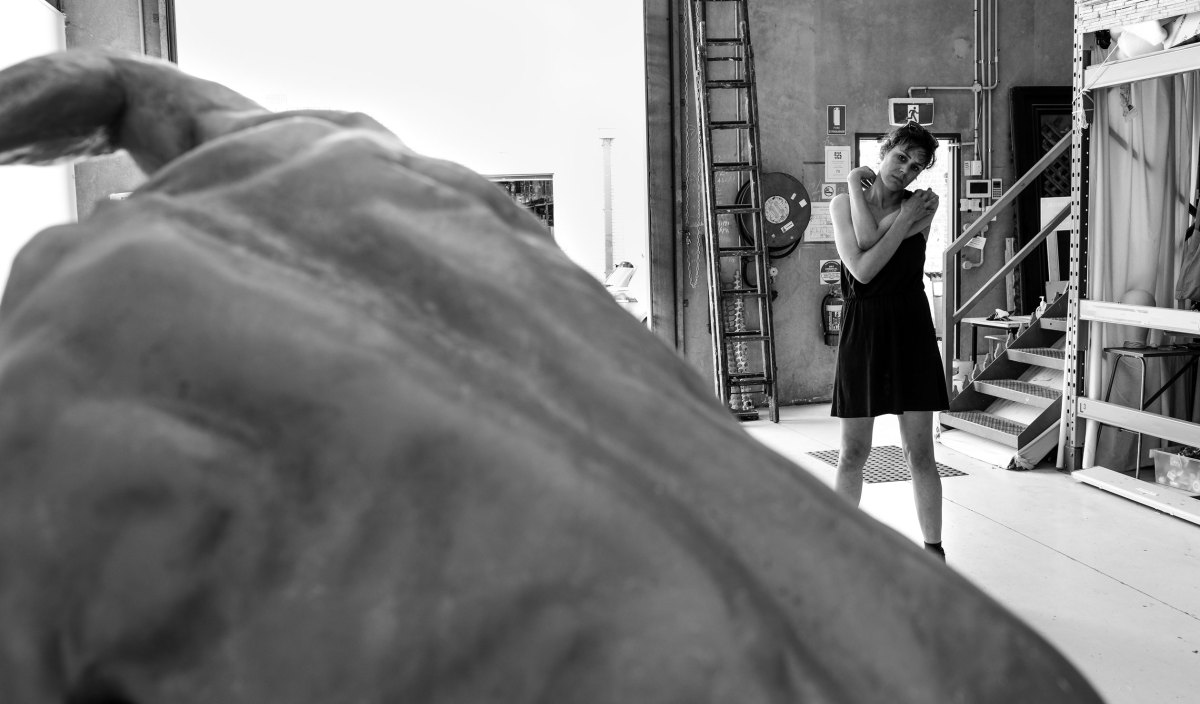
Georgina Mills considers her sculpture Anger in her studio. Photo : Asher Milgate, Considered Images
COVID ended her time in Florence, and she returned to the uncertain life of an artist in Adelaide.
Why does the discipline of neo-classical figurative style of sculpture attract her?
“Well, when I like to do something, I like to know it – not just surface ‘know’, like really understand it, and this is my craft, this is my love, this is my meaning of life. This gets me out of bed and excited and engaged with the world.
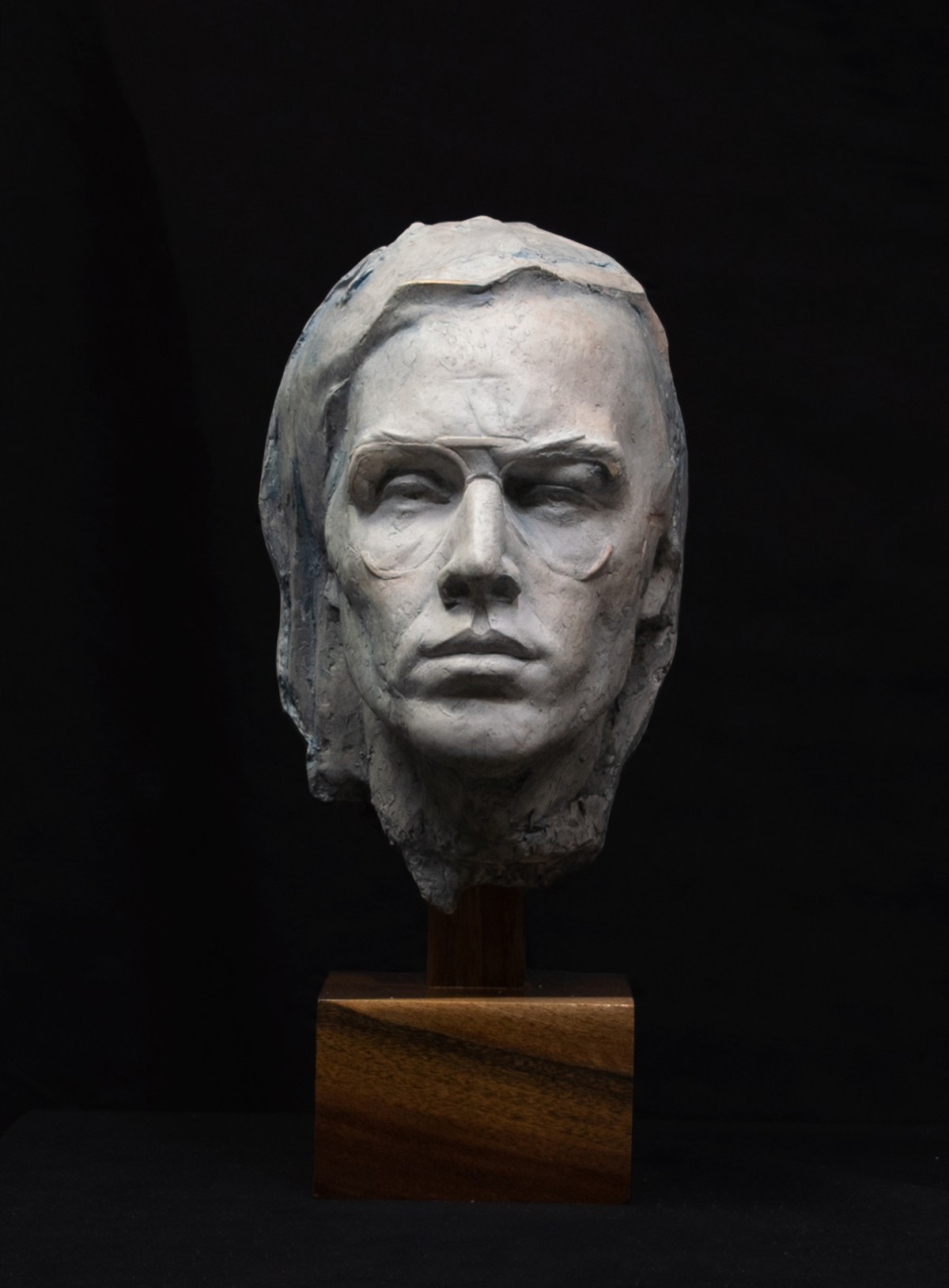
I look at and see through you, Georgina Mills, 2020.
“I want to know everything about my craft. And it’s impossible to know everything, so I like that it’s an endless kind of discovery.”
It’s no surprise she was a teaching assistant in écorché. Meaning “flayed” in French, écorché is the discipline of constructing anatomically proportionate figures without the skin, building from the bones of the skeleton to the muscles and up. It’s another way of studying anatomy.
“How you choose to use that information or that knowledge or those discoveries is up to you, but it adds a conscious decision layer to your making, sometimes unconscious.”
In 15 figures and four drawings, much of it produced this year, her latest exhibition sums up her work so far – disciplined, figurative, emotional and, above all, excoriatingly honest.
David Roche Foundation curator Tim Roberts says there’s a conversation between Mills’ pieces and the cool white idealised (mainly male) classical forms in the Roman Room at the foundation.
He praises the “characters, moods and anxieties” she captures in her models. These include the cold hard look of a handsome bespectacled man in a work titled I look at and see through you. “It’s a play on words,” she says. “Is it the glasses you are looking at and seeing through or is it the person that looks at and sees through you?”
There’s the languid female figure draped over an invisible couch in Desire for desires. There’s the wistful, compassionate wisdom expressed in her gentle portrait of her Russian friend Dasha.
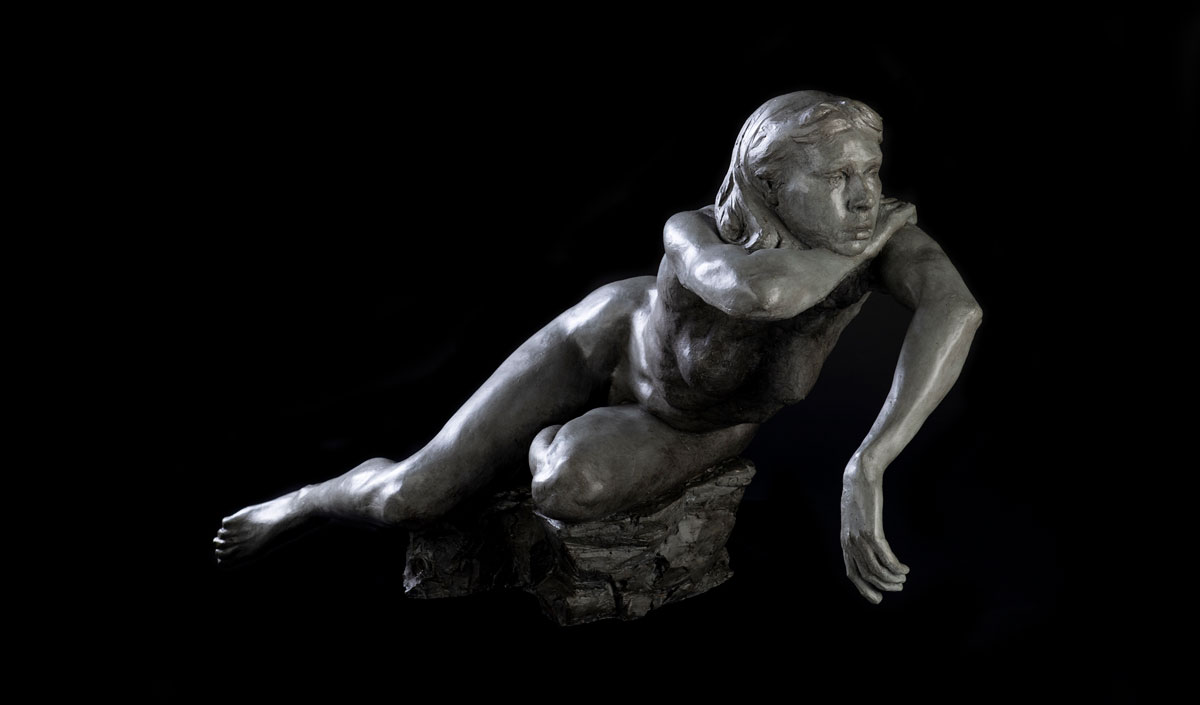
Desire for desires, Georgina Mills, 2017. Photo: Iain Bond Photography
In Mask, two faces, self-portraits, sculpted with an unsparing eye, back to back, she expresses her fears and uncertainties about returning to Adelaide.
Jann Makepeace says “Georgina is brave”.
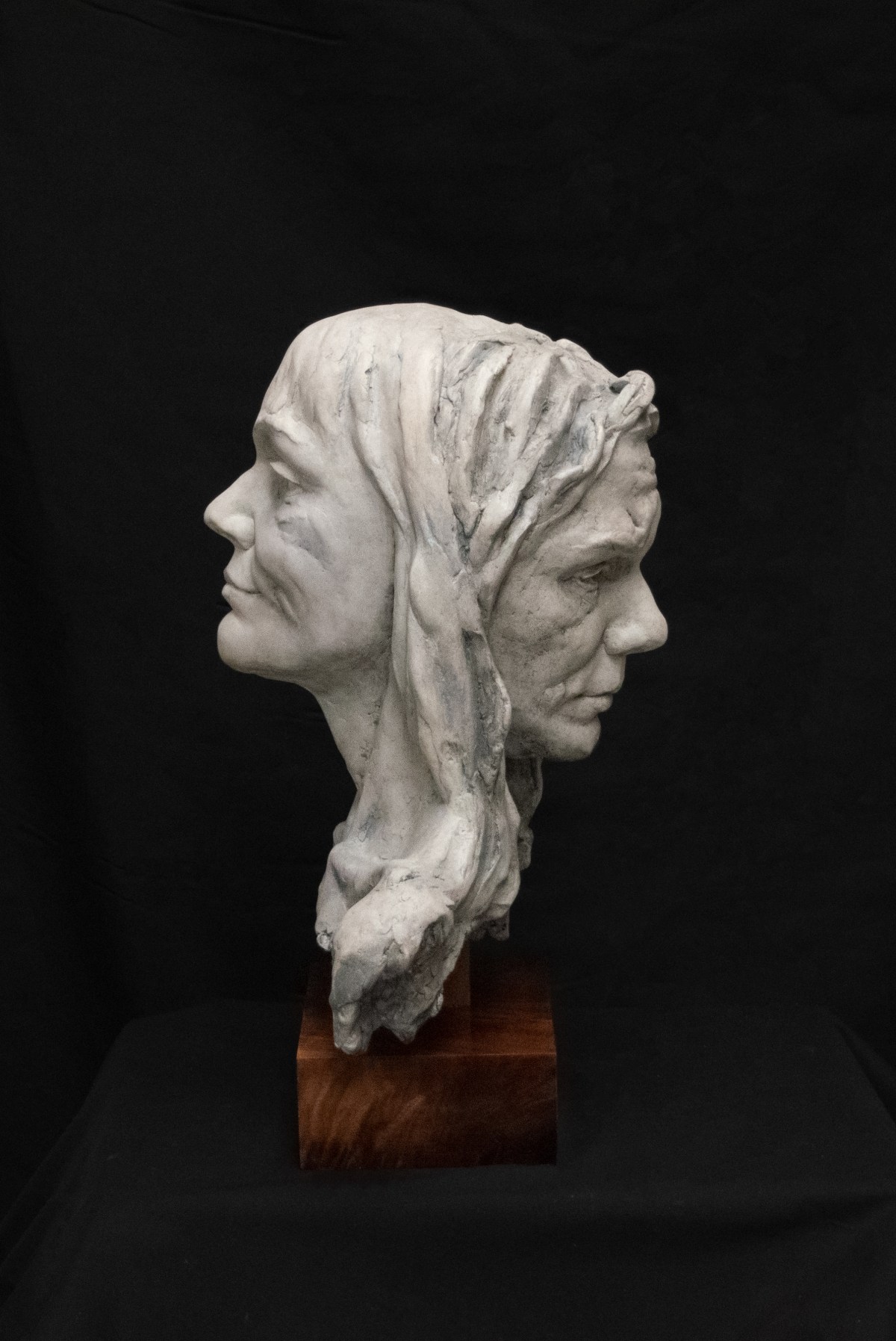
Mask, Georgina Mills, 2022.
“To look at Mask, we may feel disquiet. She has discarded the social obligation to keep up appearances. To hide. To whom should we be loyal if not ourselves?”
In another major piece, Anger, a life-size bald male figure struggles to contain anger that threatens sanity. Fists clenched, one arm aloft, threatening to hit his head, the other straight as a battering ram, the tension of containing emotion distorts the figure.
Anger is deeply personal, she says. After her partner died, “I went into a deep state of grief for about two years and found it really difficult because no one was talking about it. No one really knew about how to communicate about death and let someone be in that state of grief…
“I was aware that I was angry… probably because of grief, and I was trying desperately not to become this emotion, but it was so overwhelming that I failed and I got extremely angry or mad…”
The sculpture is part of a planned series on grief, inspired by Elisabeth Kübler-Ross’s discussion of various interrelated stages of grief: “I think it’s going to take me a very long time to get through and it’s evolving, but with this particular sculpture, I found a link to all these manifestations of grief.
Makepeace compares Mills’ characterisations of abstract emotions in human figures to those of Rodin.
“So my thinking is contemporary and I now have these skills, which may be considered classical, but does it have to?” Mills ponders “… I mean, there’s so many directions I can go with this skill.
“It’s about re-integrating myself back into Australia and I have to change the way I think and re-immerse myself in Australian sculpture, but it’s also about changing people’s opinion about classical sculpture.
“I hope there’ll be a crossover.”
Georgina Mills: Reframing is at the David Roche Foundation House Museum in Melbourne Street, North Adelaide, until September 3.




